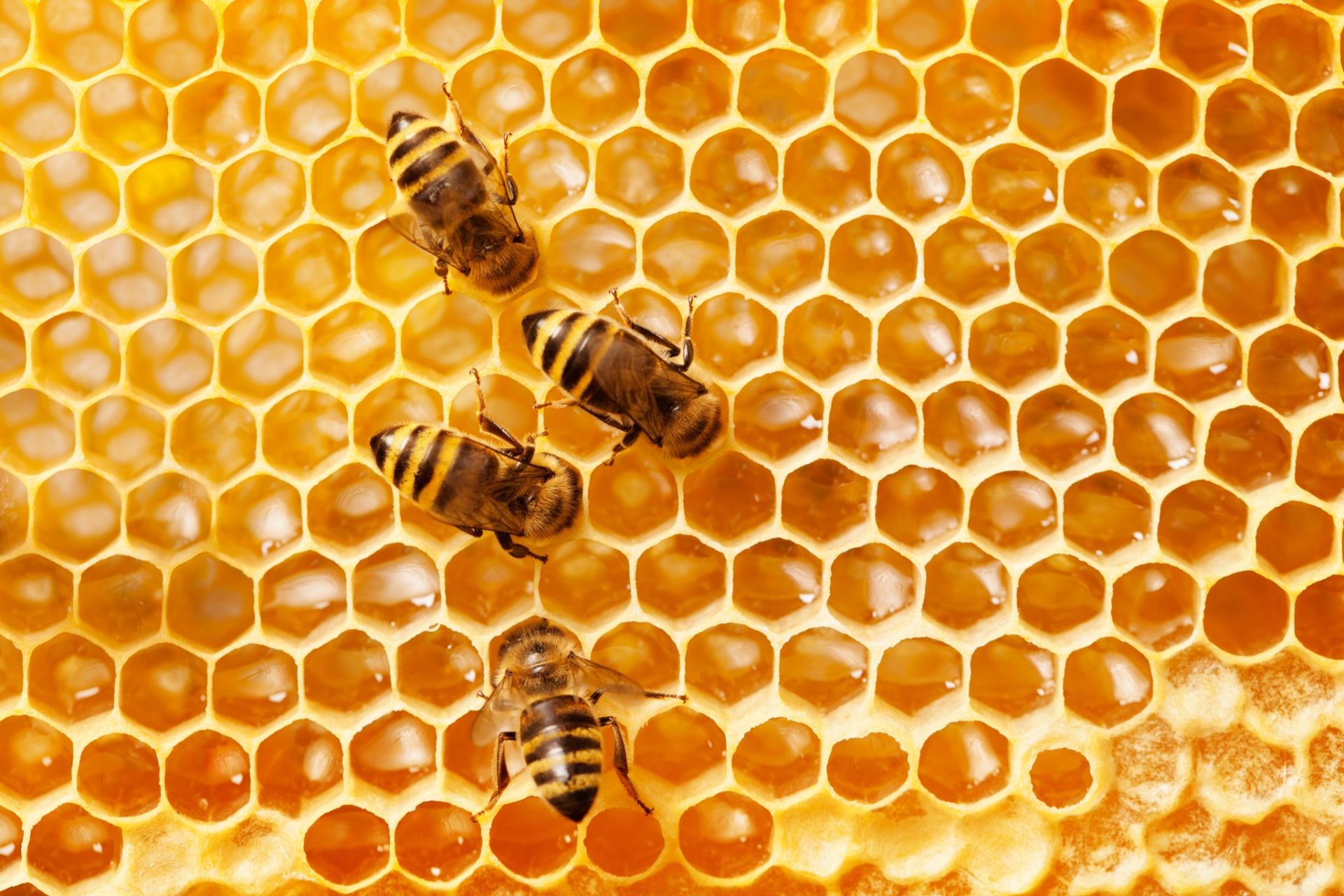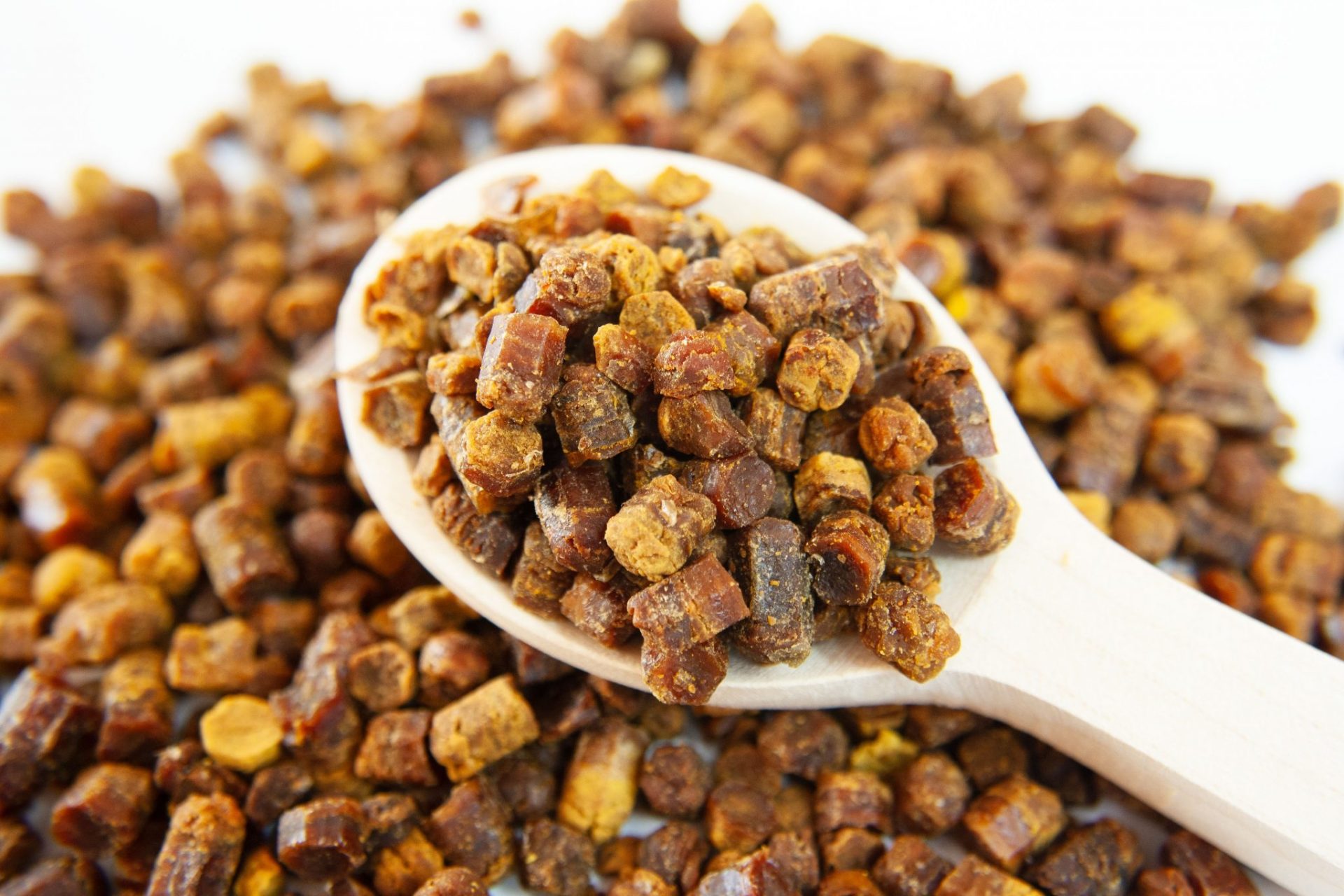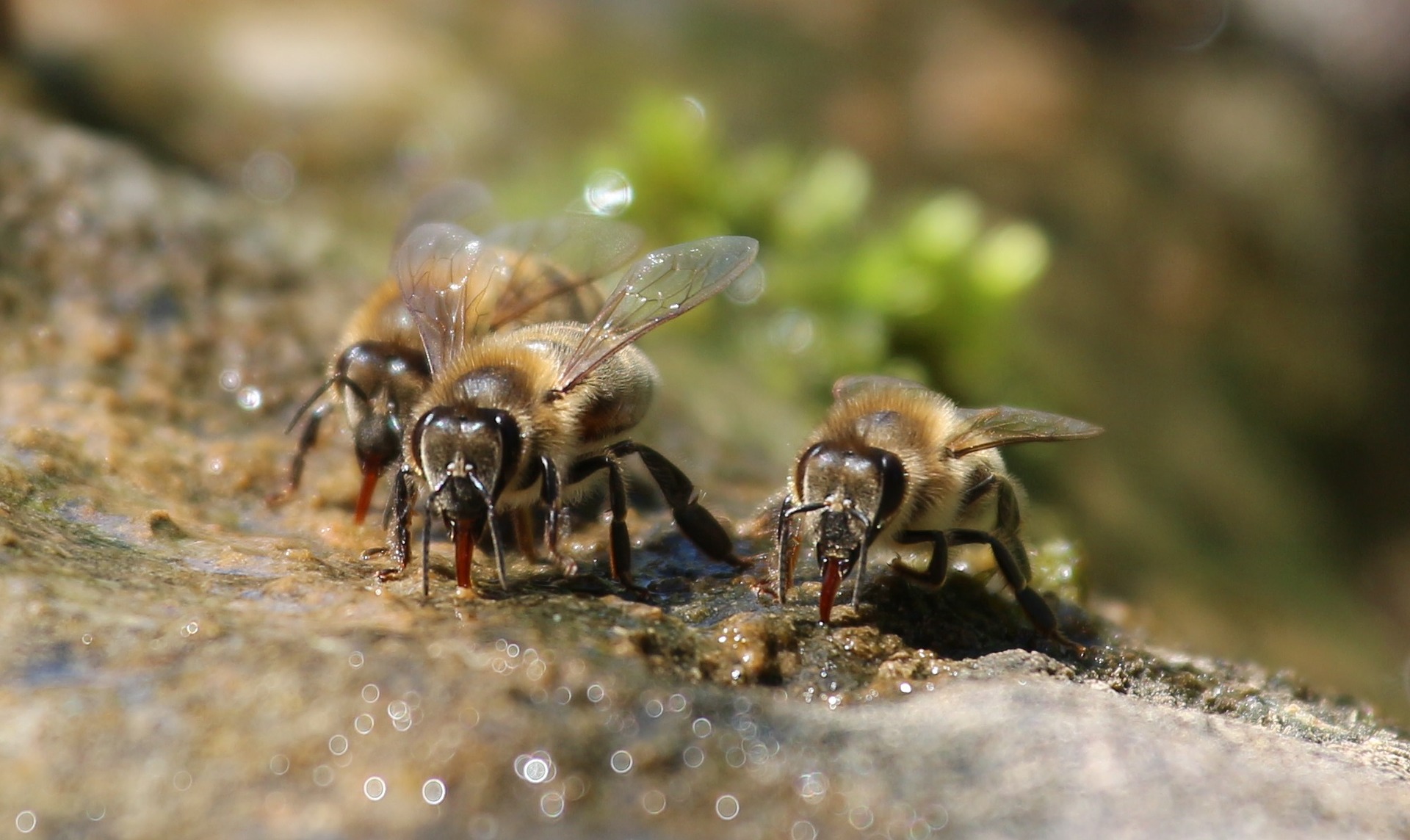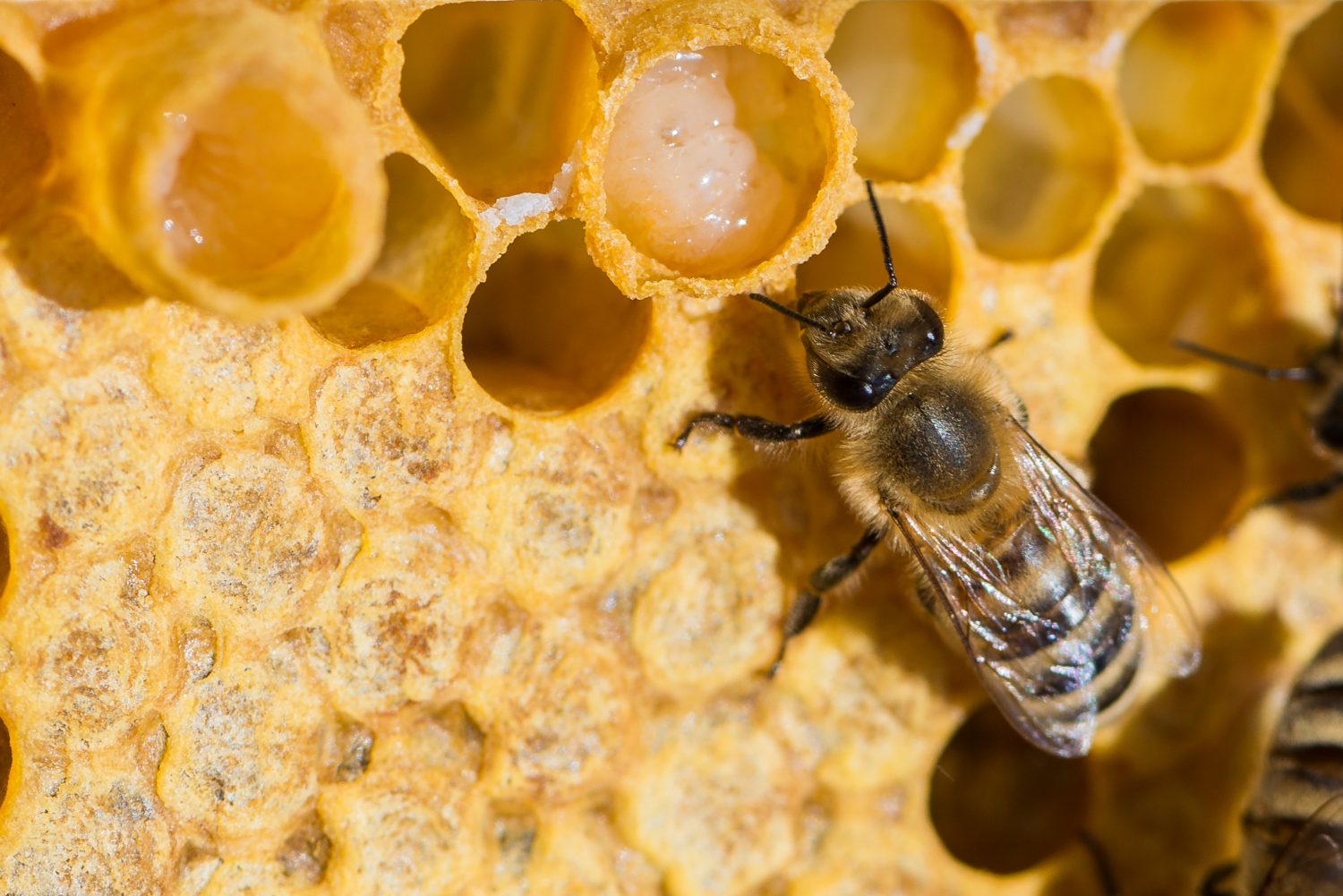If you purchase an independently reviewed item through our site, we earn an affiliate commission. Read our affiliate disclosure.
Honeybees are an intriguing species with many unique practices. You may have wondered about their diet and not found many answers. Well, in this article, you will find detailed information and explanations of the feeding habits and resources of honeybees. This article will not only inform and explain, but also help you to become a better beekeeper. By understanding their diet, you will be able to provide the best nutrition for the honeybees under your care. Understanding honeybees’ diet is also good for those who are not beekeepers but interested in the wellbeing of bees such as conservation beekeepers, and the general public too.
Influences on What Honeybees Eat
There are two major settings in which honeybees live. The first is in the wild with no human intervention. The second setting is in beekeeping operations where there is human intervention in various aspects of the bees’ lives. When beekeepers use beehives to provide shelter for honeybees, the colonies under their care are likely to have a different diet from the honeybee colonies that are in the wild.
Equally, the overall nutritional values of the diet that the honeybees in beekeeping operations get, have significant difference from the nutritional value of the diet of honeybees in the wild. Several reasons cause these differences in the diets and the nutritional value of the diets of managed honeybee colonies and those that are in the wild. They include:
1. Feeding by Beekeepers
Some beekeepers feed their honeybee colonies with different types of feeds. This is necessary in some situations to ensure survival or integration of the honeybee colony, such as when you install a new colony into a beehive. Beekeepers must carefully choose what type of feed to provide to their honeybee colonies, based on the need that the beekeeper has identified, and the outcome that they are aiming to achieve.
2. Composition of Foraging Areas
The accessible foraging areas that honeybees collect food resources from vary in their composition. Vegetation in the foraging area is the most important component that influences honeybee diet. If the vegetation that foraging honeybees access is impacted by human activities such as farming, the nutritional value varies from when honeybees forage for food in areas with natural vegetation only.
3. Competition for Resources with Other Species
In the wild, honeybees on foraging trips are in competition with other species of pollinators, insects and birds among other competitors. On the other hand, beekeepers may reduce competition for their honeybee colonies in foraging grounds, using various methods at their disposal such as removal of the competing species from the areas of land over which they have control.
Foods That Honeybees Eat
Both the human-managed colonies of honeybees and those living in the wild, collect the same resources from their environment to use as food in the beehive. Bees use resources collected from plants to make up their food. They also use water in its drinkable form, or in mixture with some types of feeds that they have in the beehive.
Despite a certain degree of similarity in the type of food that honeybees eat, there are some differences in the diets of different types of honeybees. In general, honeybees eat honey, nectar, pollen and bee bread. Male drone bees eat honey, but may eat some bee bread if they access it and if they urgently need to eat some food.
Other foods that some honeybees in a colony eat include royal jelly that is eaten by the queen bee and brood too. The duration in which brood is fed royal jelly depends on whether worker bees want the brood to produce a queen bee or not.
1. Honey / Nectar
Honey is one of the important foods for a honeybee colony. It comes from nectar that the female worker bees (called forager bees) collect from plant flowers. Nectar undergoes several processes in the beehive before it turns in to honey. In the beehive, honeybees store ready honey in wax comb cells (also called honeycomb cells or honey cells). They cover the opening of the cells that contain honey with a thin whitish layer of wax called a cap, in a process called capping.
Nectar is a product of plant photosynthesis. This is the process by which plants make various products for their use by making use of carbon dioxide and sunlight. Using the sun’s energy, the plants process carbon dioxide into sugars and other products. The sugars are put into use in various ways in the plant, including making nectar in the flowers of the plant.
How do Honeybees Collect Nectar from Flowers of Plants?
Forager honeybees collect nectar from flowers of different plants and bring it back to the beehive. Plants attract honeybees to their flowers using smells / scents. When a bee lands on a flower that has nectar, it uses its proboscis to suck as much nectar as it can into its mouth, and then swallows the nectar into its crop (honey stomach or honey sack). The forager bees use some of the nectar in their bodies to produce the energy that they need. Excess nectar remains stored in the forager bee’s crop until the bee gets back to its beehive.
How Do Honeybees Make Honey?
When the forager bee gets back to its beehive, the nectar that it has in its crop is passed from one bee to another several times. Enzymes in the crops of the bees turn the sugary nectar into a crude form of honey that is diluted. The passage of the nectar to several honeybees in sequence also helps to remove some water content.
Honeybees then store this crude form of unripe honey in honeycomb cells. They fan it with their wings to evaporate off water until it becomes honey.
Lastly, the honeybees cover the top of the honey cell with a light wax capping. This covering ensures that the honey does not easily leak out of the cell. It also prevents the honey from spoiling.
Do Honeybees Use Honey in the Beehive?
Honey is the food supply that honeybees store for their use in winter and any other time when getting nectar is not possible. Spring and summer are the seasons in which a lot of honey is made by honeybees.
All bees in a colony eat honey, or benefit from the stored honey in one way or another. Even the queen bee benefits by getting royal jelly produced by young nurse bees in their mouth parts when they feed on honey, nectar, pollen and water. Royal jelly is a complex mixture of lipids, vitamins, proteins and sugars.
2. Pollen
Pollen is a powdery substance that is produced by the male parts of plant flowers. It is sticky and is received by the female parts of the flower for fertilization to occur. The process and result of pollen moving from the male parts of a flower, to the female parts of the flower is called pollination. Flowers can be self-pollinating or cross-pollinated. Honeybees are a major pollination agent in plant life. They help pollination to occur by disturbing flowers and inadvertently transferring pollen grains from one flower to another flower of the same plant species. A fertilized flower can produce fruits and seeds while one that is not fertilized is not productive.
How do Honeybees Collect Pollen?
As they visit flowers, forager bees collect pollen that drops into their pollen sacs or baskets on their legs. They carry back the pollen to the beehive when they return from their foraging trips. Worker bees in the beehive get the pollen from the pollen sacs of forager bees and put it in honeycomb cells at the outer sections of a beehive frame.
What do Honeybees use Pollen for?
The pollen that is available in a beehive is used later as food. Mixing it with honey produces a feed called bee bread. Young worker bees (called nurse bees) eat a lot of bee bread. It helps them to produce royal jelly in their mouth parts for feeding the queen and brood of the colony.
Honeybees get a lot of benefits from the consumption of pollen in their diet. The pollen provides them with proteins and healthy fats. Nectar and honey provides the bees with carbohydrates. Pollen completes the honeybee diet to make it well rounded.
3. Bee Bread
Bee bread is a name for a mixture of pollen and other food resources made by honeybees. The mixture may be of pollen and honey, or pollen and nectar. Its exact composition, however, varies depending on the plants on which the honeybees of the colony forage on. The composition of bee bread can thus vary from season to season, day to day, and even by different times of the day.
Additionally, bees deliberately add microorganisms such as fungi and bacteria to the bee bread. In some instances, the bee bread undergoes fermentation while in storage due to the presence of microorganisms. The fermentation process is, however, limited because it happens under a cover of honey that does not allow air through it, and the preparation of bee bread involves tight packing of pollen until the cell is two-thirds full.
Beekeepers and researchers believe that adding microbes to the bee bread helps with the breaking down of the complex pollen constituents, to release amino acids among other useful nutrients. Fermentation and the presence of microbes in bee bread have probiotic benefits for the stomachs of honeybees.
How to Identify Bee Bread
Usually, bee bread is in pellet or ball form. Other names for bee bread in popular literature are ‘Ambrosia’ and ‘Bee pollen’. Bee bread contains the simple sugars, minerals, fatty acids, proteins and fatty acids from its constituent pollen and honey or nectar. Bee bread also has a percentage of other useful compounds and components that are useful for honeybees.
How is Bee Bread Stored in the Beehive?
Bee bread is the primary method for storing pollen in the honeybee colony’s habitat. It is stored separately from honey and in different zones of the beehive. In a beehive, you will find bee bread in the cells with brood, or near the brood cells. When honeybees finish preparing bee bread, they store it in brood cells and mix it with a little saliva from their mouths. They then seal the bread in with some small amount of honey.
4. Water
Water is an important component of the diet of honeybees. They use it for drinking, as well as diluting honey when they need to. Crystallized honey in the beehive is easily returned to a usable form by adding some water to it. Water also has other functions such as cooling the beehive when necessary.
You should provide your honeybees with a safe source of good quality water. For best quality, the bees should not drown at the source of water and the water should be free of chemicals and contaminants. Additionally, the water must be fresh and without harmful microorganisms in it.
5. Royal Jelly
Royal jelly is a feed product that is generated in a beehive by young honeybees. These are the female honeybees that have not yet finished their nurse duties and started going out of the beehive for foraging duties. Nurse bees take care of the queen bee and the brood of the honeybee colony. They produce royal jelly in their mouths.
Consumption of pollen or bee bread, nectar or honey and sometimes some water is necessary for the production of the best quality royal jelly. The youngest nurse bees tend to produce the best royal jelly which they feed to the queen bee of the honeybee colony. Nurse bees that are taking care of the brood of the colony feed some royal jelly to the brood.
Which Honeybees Eat Royal Jelly?
Queen bees eat royal jelly as a large constituent of their diet. They only eat negligibly small amounts of honey, nectar and pollen in their lifetimes.
Bee brood is the other consumer of royal jelly in a honeybee colony. Nurse bees feed all the larvae with royal jelly for the first 3 days after hatching from eggs. After that, the diet of larvae is honey and pollen or bee bread.
A larva that is earmarked to become a queen bee and is in a queen cell or a supersedure cell, gets royal jelly for more than 3 days. Nurse bees may feed it with royal jelly for up to 7 days.
Conclusion
There are many different resources required by a honeybee colony for their habitat. Honeybees forage for all the resources that they need in the environment around them. They use some of what they get as their food to keep colony members strong and capable of performing their diverse duties. Managed beekeeping provides some resources to honeybees with more reliability and promptness than when honeybee colonies are in the wild.
You are welcome to use the information you have gained from this article about what do honeybees eat and understanding their diet. to improve your interactions with honeybees wherever you are, in any capacity such as beekeeper, conservationist or member of the public.
References
- https://www.buzzaboutbees.net/what-do-bees-eat.html
- https://www.terminix.com/blog/bug-facts/what-do-bees-eat/
- https://www.atshq.org/what-do-bees-eat/
- https://www.animalfoodplanet.com/what-do-bees-eat/
- https://whatbugisthat.com/what-do-bees-eat-their-complete-diet-revealed/
What are your thoughts on this article? Leave a comment below and let us know.
 BeeKeepClub Resources and Guides for Beekeepers
BeeKeepClub Resources and Guides for Beekeepers






That’s a very usefull information for all bee lovers. I request you to write more giving details and some technical ratios about containts of each bee food item. Also include honey dew, ripe fruit juces,minerals in soil.
The foraging bees collect the pollens and stuff them in the pollen bags on their hind legs. They themselves put it into hive cells. Only nectar is passed on to nurse bees.
Hello, thanks for the feedback.
[…] lay the female egg at the back of their nest, followed by the male egg. They collect nectar, create food reserves for their offspring using their enzymes, and then seal the nest opening. Males hatch first […]
[…] the fact that you may no longer to find them to your native eating place or café. Some cultures consume bugs, and this is a customary a part of their lifestyles. Bees are principally fed on in its larval […]